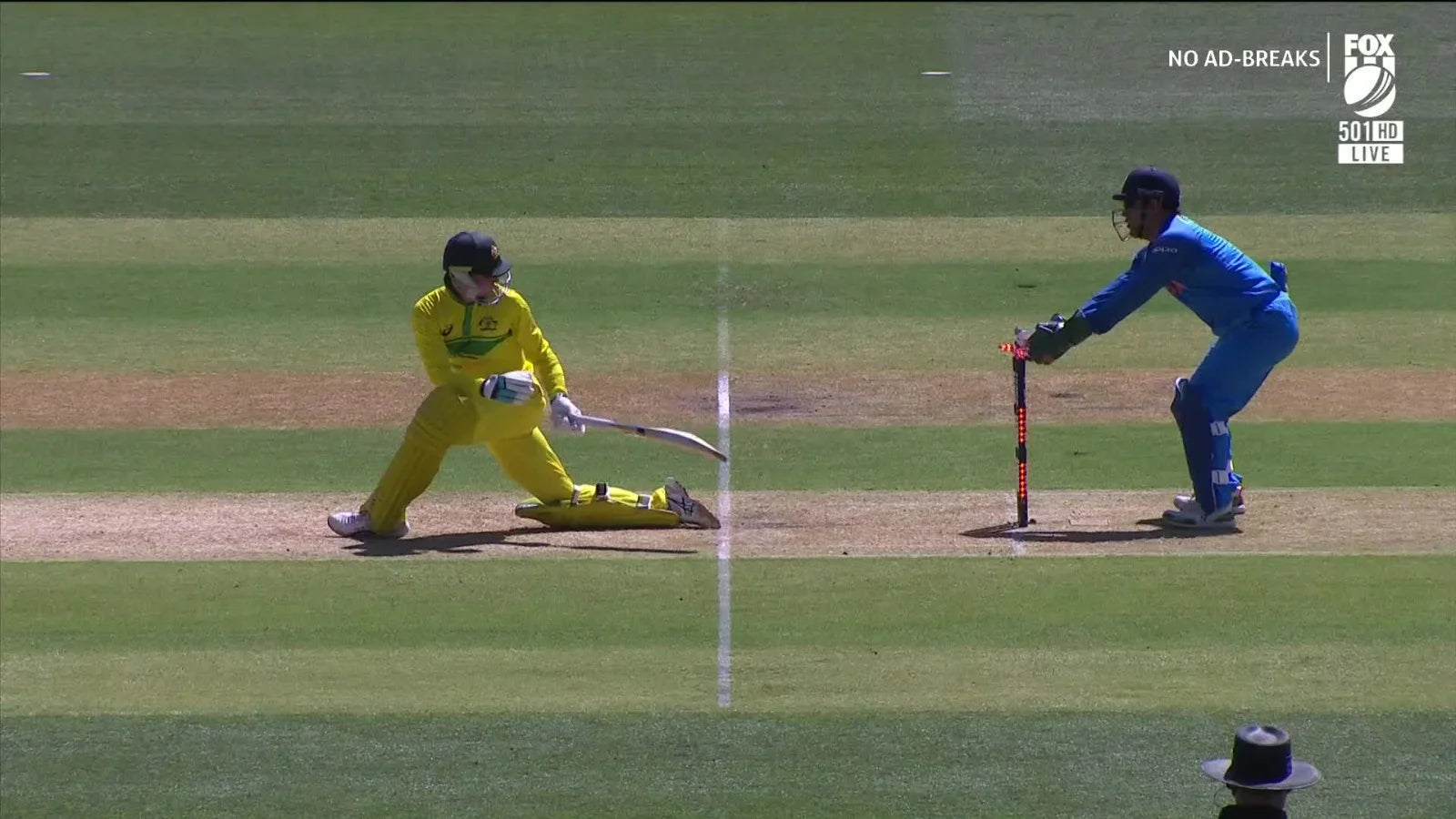Cricket, a sport prominently played and followed in India, has a huge fan base in the subcontinent. Cricket fanatics here, are hugely involved, either by playing or by simply following it. The history of cricket suggests that the game was originated in England, but due to colonialism, it grew massively in the Commonwealth countries. By virtue, it is a complicated sport as it involves a lot of rules and regulations. These cricket laws and rules are altered and revised by the Marlybone Cricket Club, at the Lord's Cricket Ground in London, from time to time, since it is the authorising body. One of the many such rules is the rule of getting out or dismissed. Dismissal is the term used when a batter on the field has to leave and the subsequent batter has to come in to bat.
In this article by ZAP, let's look at how many types of outs are there in cricket and and all the ways a batter can be dismissed.
How many types of outs in cricket are there?
There are a total of 12 ways to get a batsman out in a game of cricket. The following methods are used for the various types of outs in cricket:
Bowled out

When a batter, while facing the ball, misses it or plays it, and the ball hits the stumps behind them, dislodging the bails, it is considered to be bowled out.
If the situation arises where the ball has hit the stumps and bails are intact, it would not be considered as out. Thus, when bowled out, the one condition that is obligatory is that the bails come off. Also, the ball bowled must be a legal delivery, bowled out is invalid in the event that the delivery is not legal.
Caught Out

Caught or catch out is when a player from the fielding side catches the ball after ball has made an impact with the bat and before the ball has touched the ground. For catch-out, the fielder should be within the dimensions of the field; only then is it is considered valid. Like bowled out, catch-out is also applicable in cases where the delivery is legal.
Also Read: Cricket Fielding Tips and Techniques | Cricket Fielding Positions
LBW

In the case of legal delivery, if the ball makes its first impact with any part of the body of the batter, except arms, and if at the point of impact the ball is hitting the line of the stumps, it is called LBW. The full form of LBW in cricket is Leg Before Wicket, rightly explaining the method of dismissal.
The following 4 conditions are essential for LBW to be valid:.
The decision of LBW first lies in the hands of Umpire. Earlier, due to a lack of technology, a lot of decisions taken by umpires were faulty. But as cricket is growing worldwide, new technology and the wide usage of the Decision Review System using ultra-edge and ball tracking technology are helping teams and umpires take fair and accurate decisions.
Stumped Out

MS Dhoni's favourite method of dismissing batsman as a wicket keeper is the stumped out. When a batter is outside the crease, and the wicketkeeper dislodges the stumps of the batting side with the ball in their wicketkeeping gloves, it is called stumped out. This is also applicable on a wide ball.
The wicket keeper has to collect the ball after it has crossed the line of stumps, and if they fail to do so and collect the ball before the line of stumps, it will be considered as a no-ball and subsequently, the batter will not be considered out.
Also Read: Wicketkeeping tips and techniques
Run out

While taking a run, if the batter fails to reach the popping crease of the side towards which they are running and any player from the bowling side dislodges the stumps with a ball within their hand, it is called run out. It can be valid even if the delivery is not valid. A player can get run out from either end.
Mankading

Before releasing the ball, if the bowler dislodges the stumps of his/her side with ball in his hands and if at the same time, the batter at the non striker’s end is outside the crease, it is called mankading.
The bowler needs to cross the stump line to mankad; only then is it is considered valid.
The word ‘mankading’ comes from the name of an Indian cricketer, Vinoo Mankad, who dismissed Bill Brown in a similar way. This method involved a discussion of controversies about the spirit of the game when Ravichandran Ashwin dismissed Jos Buttler in an IPL match between the Rajasthan Royals and Punjab Kings.
While some cricket pundits believe it is right, others hold the opinion that it is wrong and against the spirit of cricket. Those who support it say that if it is within the laws, then there shouldn’t be any question about morality. While those who do not support it believe that it’s a shallow way of taking the opponent’s wicket.
Hit wicket

While playing a ball, if the batter hits the stumps, either with any of his equipment or with any part of body, and the bails come off, the batter is hit wicket out.
Handling the ball

If the batter intentionally touches the ball with hand or gloves instead of playing it with the bat, it is called handling the ball.
If the ball is going to hit the stump after the batter has played the ball, and if at that time the batter tries to stop the ball with any body part and not bat, it is also considered as handling the ball. However, a batter is allowed to stop the ball from hitting the stumps with his bat.
Obstructing the field

If the ball is in play, and the batter intentionally obstructs the field or stops the ball with body or bat, it is called obstruction of field and is considered out.
Timed out

When the subsequent batter doesn’t enter the field and is not ready to play his/her first ball within the stipulated time, i.e. 3 minutes, the batter is considered out.
One of recent examples of timed out was that of Angelo Mathews. In 2023 ICC ODI World Cup, a match was held between Sri Lanka and Bangladesh. Shakib Al Haan, the skipper of the Bangladesh team, appealed for the dismissal of Angelo Mathews as he was facing some issue with helmet and was not ready to play the ball within the stipulated time. Later, Angelo had to go, which ended up with a heated conversation between players from both sides.
Hit the ball twice
If the batter intentionally hits the same legal ball twice with his bat, it is called hitting the ball twice. However, if the batter does it by mistake, that doesn’t count as hitting the balls twice.
Retired out

If the batter leaves the field without getting out by any of the above manner, it is called retired out. The batter is not allowed to come and bat again, once they leave the field
It is different from retired hurt and in case of retired hurt, the batter leaves due to some injury. In this case, however, the batter can come and bat again later.
Conclusion:
Hence, there are many ways in which a batsman can get out in cricket. To ensure fair play, a professional game has 3 umpires - two of them are on the field. These umpires make the final decision about whether a player is out or not, and their decision cannot be superseded. They ensure that all the rules are diligently followed by all the players. If any player disobeys the umpire or any of the rules, he/she may be fined, or even banned, depending on the breach.
Now that you have read about all the types of outs in cricket and all the ways to dismiss a batsman, here are some more articles we recommend you read:
How to become an Umpire | Cricket Fast Bowling Techniques | Spin Bowling Techniques



Share:
Jonty Rhodes - The Greatest Fielder of all Time in Cricket
Leg Before Wicket - LBW in Cricket: Meaning, Origin, Rules and Use of DRS